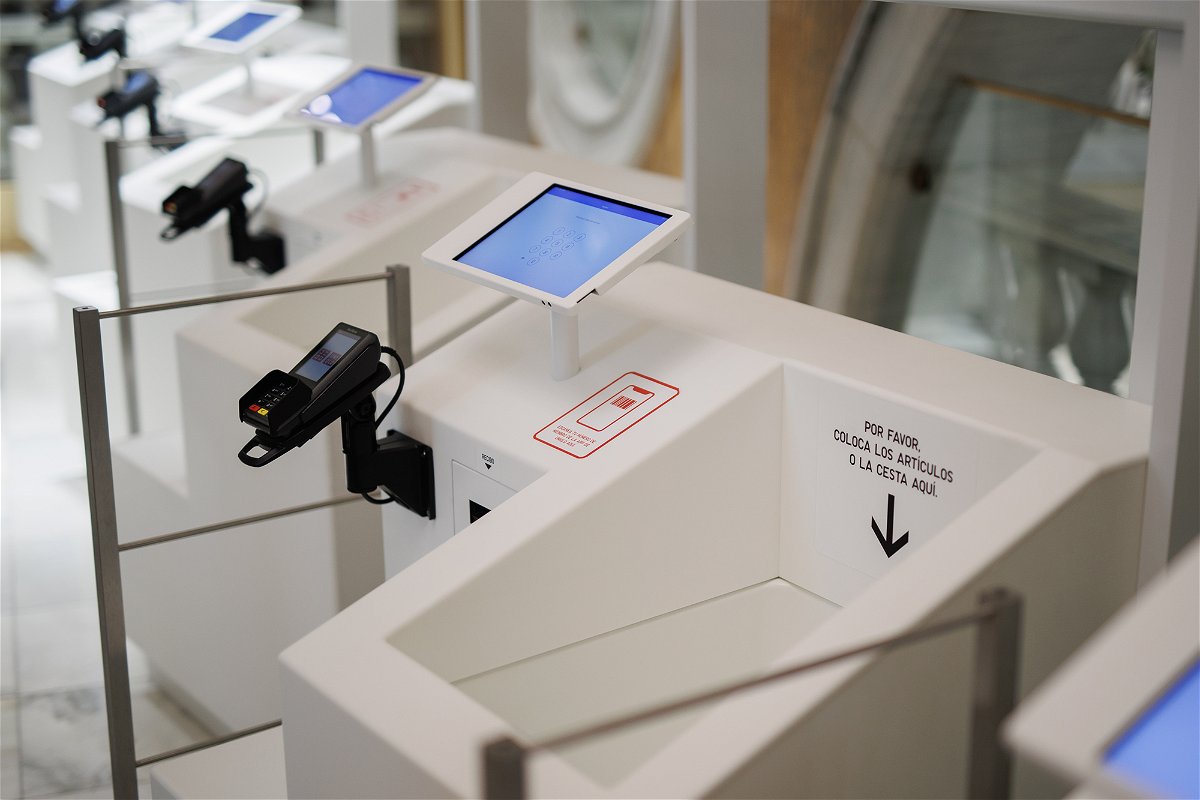Self-checkout annoys some customers and helps shoplifters. Stores are adding it anyway

(CNN) -- Self-checkout arrived in the late 1980s at supermarkets. A decade later, it began spreading to big-box chains and drug stores. Now, self-checkout, loved by some and hated by others, has entered discount clothing and department stores.
Kohl's is testing self-checkout stations at a handful of stores. H&M added them at three stores and plans to roll the program out to more than 30 stores by the end of next year. Bed Bath & Beyond first tried self-checkouts at its flagship in New York City last year and has since added them to several locations. Zara has it at 20 of its largest US stores.
Plus Uniqlo, Primark and other chains have started to roll out self-checkout machines at some of their stores.
These retailers are beginning to adopt self-checkout for a variety of reasons, including labor savings, customer demand and improvements to the technology.
Labor is one of the largest expenses for stores, and they are trying to save money as costs rise and more shoppers buy online. Self-checkout transfers the work of paid employees to unpaid customers.
Self-checkout stations eliminate some of the need for human cashiers, which is why retail unions typically oppose the technology. The number of cashiers in the retail industry is expected to decline by 10% over the next decade, in part due to the rise of self-checkout, according to the Bureau of Labor Statistics.
These stores are also responding to customers who prefer self-checkout and perceive it to be faster and more convenient than checking out through a traditional cashier. Millions of customers used self-checkout for the first time during the Covid-19 pandemic to minimize close interactions with workers and other shoppers, and got accustomed to the technology.
But these companies' attempts to bring self-checkout to stores come with risks, including irritated customers and more shoplifting.
According to a survey last year of 1,000 shoppers, 67% said they'd experienced a failure at a self-checkout lane. Errors at the kiosks are so common that they have even led to dozens of memes and TikTok videos of customers complaining of "unexpected item in the bagging area" alerts.
Customers make honest errors scanning barcodes as well as intentionally steal items at unstaffed self-checkout stands.
"It does present some real challenges," said Adrian Beck, an emeritus professor at the University of Leicester and retail industry consultant who researches self-checkout. Retail losses are higher at self-checkout stations than at staffed checkout, Beck has found.
Traditionally, clothing and department stores have relied on hard security tags on merchandise to prevent shoplifting. This is a problem for self-checkout: customers aren't used to removing security tags themselves, and most self-checkout machines aren't equipped to do so.
To get around this, some apparel stores are using wireless "radio frequency identification" security tags, known as RFID, on merchandise instead of hard tags.
Stores such as Uniqlo have invested in new self-checkout machines that automatically recognize these tags, eliminating the need for customers to scan any products themselves or remove security tags. Customers simply drop their merchandise in a designated box at the self-checkout station and the machine automatically identifies the item and displays the price on a screen.
The spread of self-checkout to budget-oriented clothing and department stores has other impacts, too.
It entrenches a divide in retail where one segment of customers gets better service than others, said Christopher Andrews, a sociologist at Drew University and author of "The Overworked Consumer: Self-Checkouts, Supermarkets and the Do-It-Yourself Economy."
Although shoppers of all incomes visit these stores, it's unlikely that luxury brands will have customers do "quasi-forced unpaid work under surveillance," Andrews said.
"Is this an early glimpse of a future where the affluent get in-person service and the working classes are required to perform free work to get their food and clothing?"
The-CNN-Wire
™ & © 2022 Cable News Network, Inc., a Warner Bros. Discovery Company. All rights reserved.
